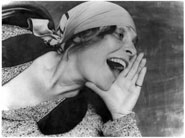| The Photographic Poster : The Origins in Dada Photomontage | |||
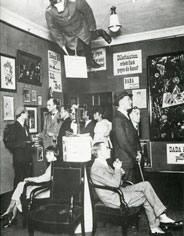 First International Dada Fair, held in Berlin in 1920 |
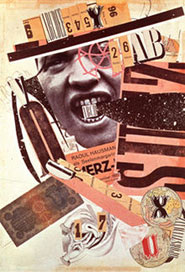 |
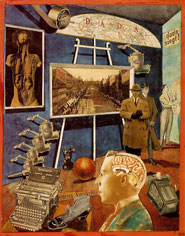 |
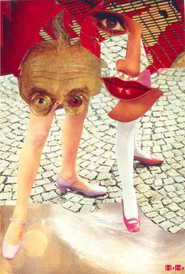 |
Club Dada (1916-22) The art and cultural movement Dada, originated in Switzerland during WWI, encompassed visual arts, theater, poetry and graphic design. Its members, "were responding to the violence and trauma of World War I—and to the shock of modernity more generally—by developing shock tactics of their own. They critiqued traditional conceptions of the artist as master of his medium by using prefabricated materials or relegating aesthetic decisions to chance. They scoffed at the conventional definition of artistic media, expanding it to include the stuff of modern life—newspapers, magazines, ticket stubs, mechanical parts, food wrappers, pipes, advertisements, light bulbs, and so on. Through their performances, publicity stunts, and manipulation of mass media, they further altered perceptions of what constituted a work of art by blurring the boundaries between art and life. Art, the dadaists believed, should not be an escape from daily events, but rather it should make visible the violence, chaos, and hypocrisies of contemporary life. As the dadaist Hugo Ball wrote, "For us, art is not an end in itself . . . but it is an opportunity for the true perception and criticism of the times we live in." Beneath the humor and absurdities of dadaism lies a serious moral underpinning."1 The dadist spread their message through staged public demonstrations and avant-garde art and literary publications beyond Zurich in Dada outposts in Berlin, Hannover, Cologne, New York, and Paris. |
Photomontage or Collage? The term photomontage came from the German Dada at the end of WWI. Photomontage is the combination of two or more photographs into a singe image through photo manipulation—via several negatives (combination printing) or multiple exposures. Although photomontage had been used by earlier artists, the Dada method took new meaning as the images' original intent was shifted to an unintended message. Do not confuse photomontage with collage. Collage is created by cutting, assembling and pasting various images onto a single surface. The result can be an assemblage, a composition or a jumble. It is interesting to note that letterforms and words were included as part of the composition, some as nonsense words but often only as visual elements.
|
Raoul Hausmann (1886–1971) Many of the members worked in the medium and likewise many felt that they were the originators of the technique. George Grosz, John Heartfield & Johannes Baader all laid claim to having invented the technique in later memoirs. Here is DADA member Raoul Hausmann's version:"I had started making compositions with newspaper clippings and posters in the summer of 1918, but I conceived the idea of the photomontage during a stay in the Baltic Sea in the village of Heidebrink on the island Usedom. In almost all of the homes hung a colored lithograph representing a grenadier guard in front of a background of barracks. To personalize this military memento, the existing head a photographic portrait of the household's soldier had been glued. It was like lightning, I saw it instantly—we could create compositions 'entirely constructed from photo clippings'.2 Regardless of the origin the method of photomontage was to become a powerful influence on other artists and art movements (Kurt Schwitters, El Lissitsky and Russian Constructivism) as well as a sophisticated technique employed in advertising and graphic design.
|
Hannah Höch (1889-1978) Hausmann, along with Höch, was one of the first pioneers of photomontage. "Höch, the only female member of the Berlin Dadaists played a vital role in legitimizing photomontage as a fine art form. Use of the technique piqued in the early 1930s. By the 1940s it all all but vanished from sight as a fine art medium, although it remained broadly popular as a format for advertising. Höch's involvement with the Berlin Dadists began in earnest in 1919. After her schooling, she worked in the handicrafts department for Ullstein Verlag [The Ullstein Press], designing dress and embroidery patterns for Die Dame [The Lady] and Die Praktische Berlinerin [The Practical Berlin Woman]. The influence of this early work and training can be seen in her later work involving references to dress patterns and textiles. From 1926 to 1929 she lived and worked in the Netherlands. Höch made many influential friendships over the years, with Kurt Schwitters and Piet Mondrian among others. " 3
|
| Photomontage Evolves into a Graphic Design Staple | |||
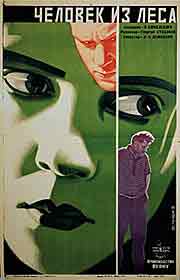 |
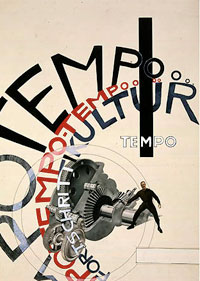 |
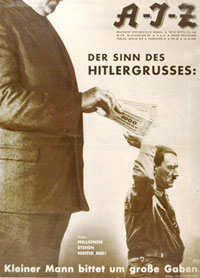 |
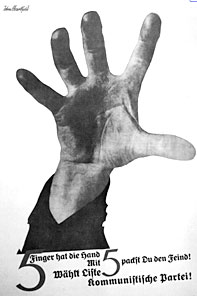 |
|
Stenberg Brothers—1928
In the turbulent politics of Russia in 1919, the fine arts were rejected as part of a change in political ideology. In the new Communist society art was put to work in the service of the state. Two artistic mediums, movies and posters, were exploited by the state as the perfect platforms to educate the illiterate masses. Stylistically artists became constructors, assembling images into new compositions and collages. Two brothers, Vladimir and Georgii Stenberg, created a series of dramatic posters for the Russian cinema. Mechanical enlargement was not yet available, so they developed a special hand technique to increase images to poster size. They combined contrasting scale and unusual color application to create dramatic, theatrical impact. 4 |
Marianne Brandt (1893–1983)
Known more for her metal work, Marianne Brandt privately worked on photomontage and avant-garde collage compositions at the Bauhaus. Her Tempo, Tempo Progress, Culture, 1927, creates “An image of a confident engineer, presiding over an enormous machine that radiates rings of dynamic text, it vibrates with the optimistic spirit of the Bauhaus. Her collages were not known until the 1970s, after World War II, when a renewed interest in Bauhaus practice led art historian Eckhard Neumann to encourage Brandt, who had returned to her hometown in East Germany after the war, to send some of the early experiments west. All but two of the works here* were, as far as we know, not meant for public display. And of those, Tempo-Tempo was a design for a magazine cover that was never used." 5 |
John Heartfield (1891-1968) Heartfield (born Hersfeld)was a political artist who used the medium of photomontage to as his means of activism. He joined the Communist party and the DADA movement, exhibiting his work in the first Dada exhibition in Berlin in 1920. (If you look really closely to the image of the Dada exhibition in the first entry on this page you will see a work by John Heartfield (along with Rudolf Schlichter). It is a pig headed "Prussian Archangel" used to mock the military.) Heartfield is best known for his photomontage posters designed to reveal the real intent behind the rising Third Reich during the 1930's. He often satirized Hitler and the Nazi Party, including text quotes from leading Nazis, the one above from the J. Paul Getty Museum(above) which shows what is really meant by Hitler's millions. |
Top: Die Rote Fahne, 1928 6 |
| Photomontage : The Surrealistic Advertising Poster | |||
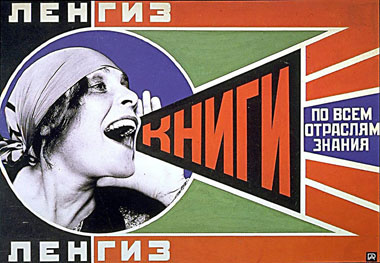 Literacy poster (1924) Literacy poster (1924) |
|
||
Photomontage Icons Alexander Rodchenko (1891-1956) combined photography and typography for a specific purpose, (not a decorative element) extensively in the Russian Constructivist style of advertising and propaganda. His work was copied on CD covers by UK band Franz Ferdinand. (More about Rodchenko on the Russian Constructivist page.)
|
In the 1920s, Brik directed two films, a documentary titled Jews on the land, based on a scenario about Jewish collective farms in Russia and a parody on bourgeois cinema titled The Glass Eye. |
Herbert Matter (1907–1984) Matter studied under Fernand Léger at the Académie Moderne in Paris in the late 1920s. Influenced by the photographs and collages of Man Ray and EL Lissitzky, Matter experimented with expressive design using his Rollei camera. He was hired as photographer and designer for the Deberny and Peignot typefoundry, assisting poster designer A.M. Cassandre. Upon his return to Switzerland Matter designed a series of travel posters using his signature photomontage technique. The poster above, a combination of three different photographs, was printed by photogravure, a high quality process that results in dense ink coverage and rich color. See the whole Swiss poster story. At age 32 Matter moved to the US and soon produced work for the likes of MOMA, Condé Nast, the Guggenheim Museum, Knoll Furniture and the New Haven Railroad. A film, The Visual Language of Herbert Matter, is making the rounds to design schools and conferences ...check the viewing schedule here. |
Lester Beall (1903–1969)
Lester Beall graduated from the University of Chicago with a PHD in Art History but established a career a designer. He moved east where he established a design office in New York City. Obviously influenced by the European avant garde, Beall synthesized their design explorations into plausible solutions for corporations and publications. Beall is most known for his series of posters, produced between 1937 and 1941, for the US Government's Rural Electrification Program. At that time many parts of the US were still without electricity and the government wanted to encourage communities to get on the grid. In addition to improving the quality of life, additional electrical customers would translate into expanding markets for manufacturer's products and stimulate economic growth. There is a very pretty web site dedicated to Lester Beall, LesterBeall.com—but be forewarned the scrolling text takes some patience. Enjoy the images. |
| Footnotes | |||
1 2 3
|
4 5 6
|
7 |
|
| Copyrights | |||
| ©Designhistory.org 2011 | For Permission Info click here | ||

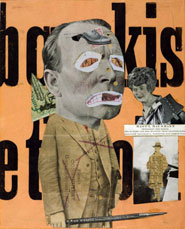
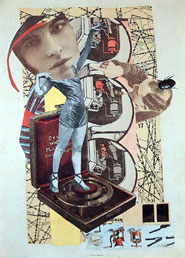
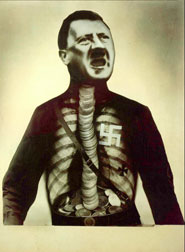
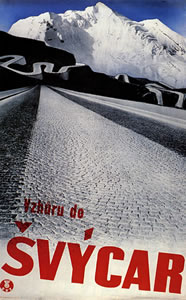
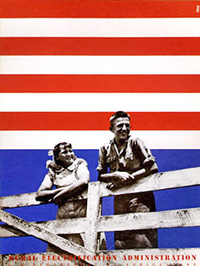
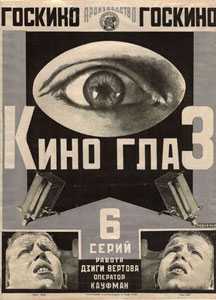 Rodchenko movie poster
Rodchenko movie poster 